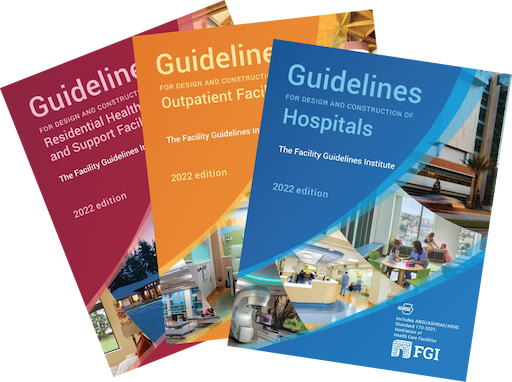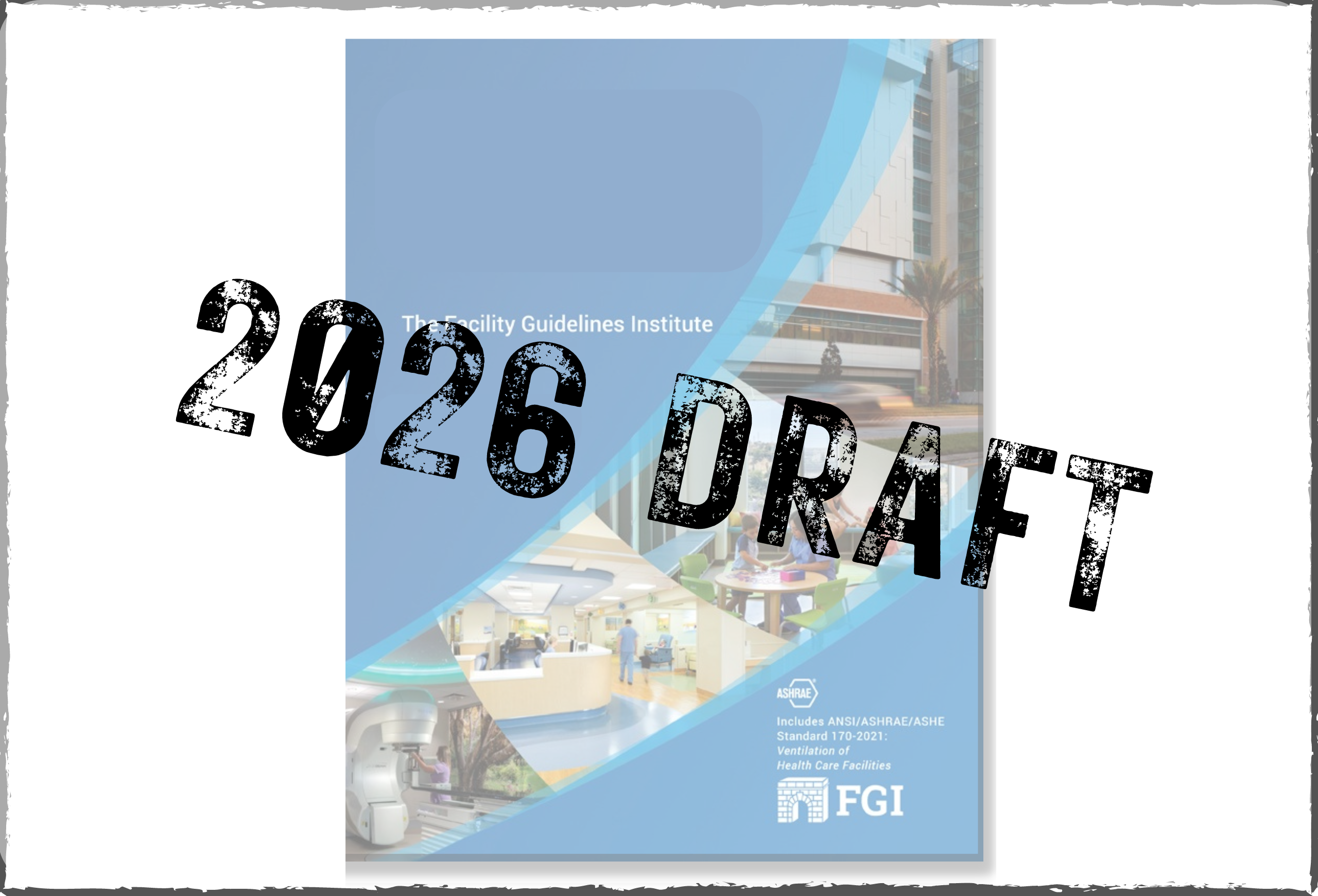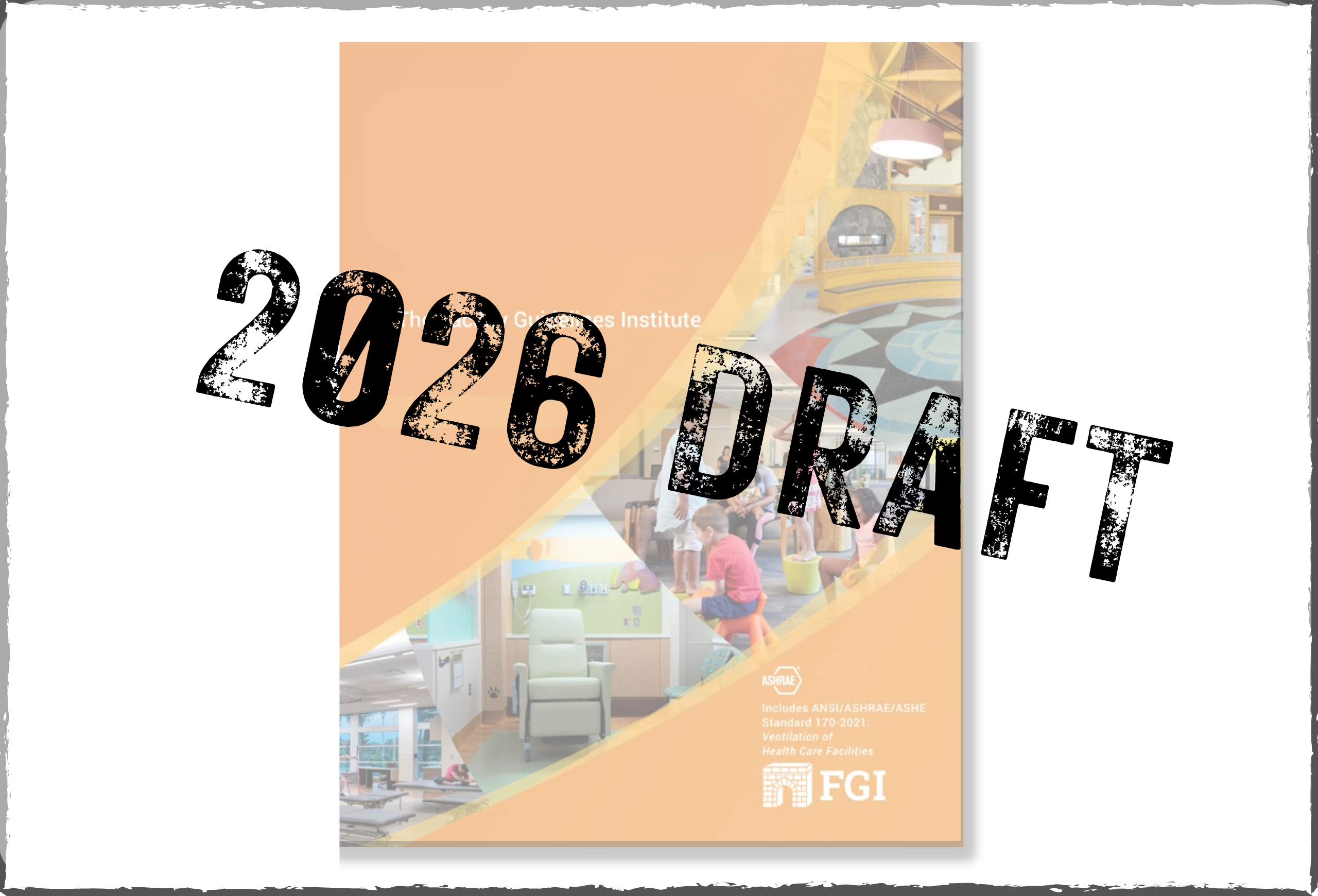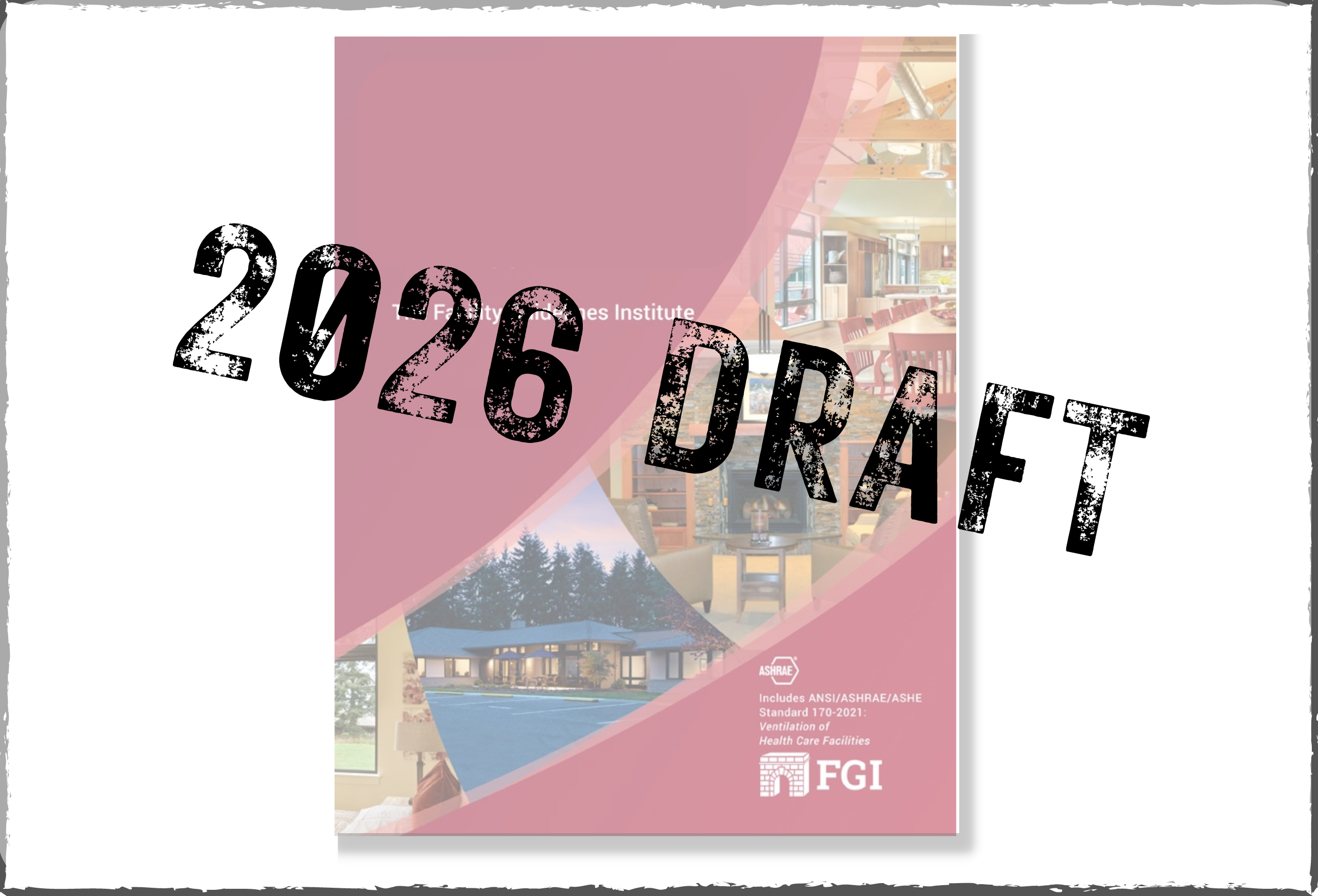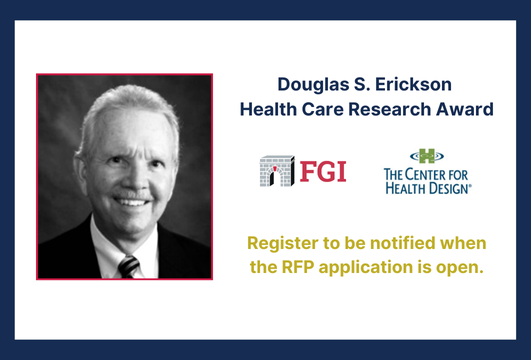About FGI
Mission
Establish and promote consensus-based codes, advised by research, to advance quality health care.
Vision
FGI will be the leader in guiding the development of the health care built environment.
Goals and Objectives
The main objectives of FGI
- To see that the Guidelines is reviewed and revised on a regular cycle with a consensus process carried out by a multidisciplinary group of experts from the federal, state, and private sectors
- To stimulate research in support of evidence-based guidelines
- To reinvest all net revenue derived from FGI’s share from the sale of Guidelines documents in research and development for improved future editions of the Guidelines.
Goals regarding the Health Guidelines Revision Committee (HGRC)
To make sure the HGRC:
- Is properly funded
- Has a balance of stakeholder representation from individuals with expertise or jurisdiction
- Uses the consensus process
- Requests public input in the form of proposals for change and comments on proposed changes
- Reviews and revises the Guidelines on a timely basis to maintain a balance between minimum standards and the state of the art in design and construction of health and residential care facilities
- Operates under a formal set of bylaws governing its purpose, scope, membership, and goals
- Has standing rules governing voting procedures
- Has recognized duties and responsibilities for committee members
- Has established rules regarding appointments, terms, and officers
Goals regarding public requests
- To monitor public requests for interpretation of Guidelines text
- To make sure requests are answered in a timely manner
- Interpretations are rendered by the individuals best equipped to reflect the intent of the HGRC when the document was written
- Interpretations are made available to the public
Board of Directors
FGI Staff

Heather Livingston
CEO
Westhampton, Massachusetts

John Williams
VP, Content and Outreach
Olympia, Washington

Barbara Stretchberry
Managing Editor
Middleton, Wisconsin

Moira Cleary
Director of Operations
Johns Creek, Georgia

Marissa Lamperis Kastrinos
Director of Education
Orlando, Florida

Bridget McDougall
Associate Editor
St. Louis, Missouri

Yvonne Chiarelli
Associate Editor
Columbia, Maryland

Laurel Tilot-Jezowski
Associate Editor
Lansing, Michigan

Cara DelleChiaie
Office Manager
Catskill, New York

Pamela Blumgart
Consulting Editor – In Memorium
Mount Rainier, Maryland
History of the Guidelines
The FGI Pioneer Award

Only a few select individuals or organizations in our midst are compelled by a vision to view a new path and embody the pioneering spirit and perseverance to pursue that path. They are the pioneers who lead us to a preferred future, and their dedication and passion inspire others to new levels of performance.
To honor these trailblazers, the Facility Guidelines Institute Board of Directors instituted the FGI Pioneer Award in 2015 to honor an organization or individual who has influenced the future of health care facility design and construction through participation in and support of FGI’s mission and vision. The Pioneer Award was established to acknowledge the contributions of FGI founding pioneer J. Armand Burgun, FAIA, FACHA, who was its first recipient.
The Pioneer Award is not a yearly award, but may be granted whenever the FGI board wants to recognize excellence.
